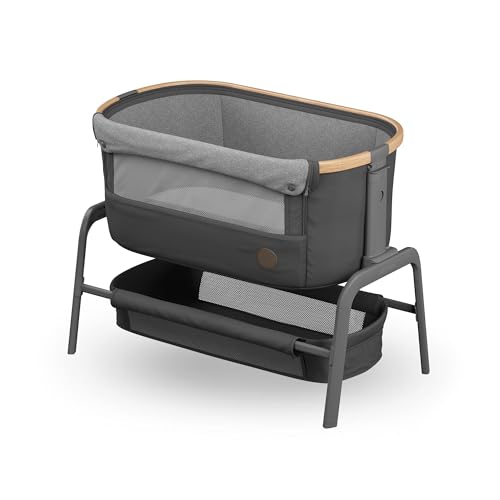The Importance of Bedside Cots for Infants: A Comprehensive Guide
As new parents embark on their parenting journey, they are faced with a myriad of choices concerning their infant's sleep arrangements. Among Bedside Cot For Peaceful Nights , the bedside cot stands out for its myriad of benefits. This post explores the significance of bedside cots, discusses their advantages and disadvantages, answers often asked questions, and consists of a relative table to assist parents make informed choices.
What Is a Bedside Cot?
A bedside cot is a sleep space created to be positioned next to the parents' bed, permitting easy access to the infant throughout the night. These cots include adjustable height settings, allowing them to align with the height of the adult bed. Often, they can be connected safely to the bed or stay nearby, supplying a safe yet available sleep environment for the baby.
Types of Bedside Cots
- Co-Sleeping Cots: These cots attach firmly to the parents' bed, permitting close proximity while guaranteeing the baby has their own safe sleeping space.
- Freestanding Cots: These are located next to the bed however do not attach directly. They still offer a convenient reach for feeding and comforting.
- Portable Cots: These cots are light-weight and created for travel, often including foldable designs and easy-transport abilities.
Benefits of Using a Bedside Cot
Bedside cots provide a number of advantages that can enhance both the infant's sleep experience and the parents' peace of mind. These include:
1. Improved Safety
According to the American Academy of Pediatrics (AAP), having the infant sleep in the exact same room as parents, without sharing the same sleeping surface area, considerably decreases the danger of Sudden Infant Death Syndrome (SIDS). A bedside cot uses a safe space while preserving proximity.
2. Easier Nighttime Care
When a baby is within arm's reach, feeding, diaper modifications, and comforting becomes a lot more convenient. Parents can quickly relieve their infant without completely waking from sleep or leaving the bed.
3. Encouragement of Bonding
The close distance provided by a bedside cot encourages bonding throughout nighttime feedings or comforting. This can cultivate a sense of security for the infant and assistance establish stronger emotional connections.
4. Space-saving Design
Many bedside cots are developed to be compact, making them ideal for small living spaces where a full-sized crib might not fit. They can be easily moved or kept when not in use.
5. Versatile Functionality
A lot of bedside cots can be adjusted in height and typically include detachable sides, making them adaptable for numerous uses as the kid grows or household needs change.
Disadvantages of Bedside Cots
In spite of their benefits, there are some drawbacks to consider when picking a bedside cot:
1. Limited Lifespan
Bedside cots generally have a shorter lifespan than basic cribs, typically accommodating infants only up to a specific weight or height. Parents might need to transition to a full crib quicker than anticipated.
2. Stability Concerns
If not safely attached or properly placed, a bedside cot might posture safety concerns. Parents need to guarantee that the cot is stable and well-aligned with the bed.
3. Adjustment Period
Some infants may require time to get utilized to sleeping in a cot, especially if they are used to closer contact. Parents might need to be client as their child adapts.
How to Choose the Right Bedside Cot
When picking a bedside cot, parents ought to consider the following criteria:
- Safety Standards: Ensure the cot complies with all security guidelines.
- Adjustability: Look for height-adjustable features that align with your bed.
- Building Material: Choose a cot that is durable and made from non-toxic materials.
- Relieve of Use: Opt for styles that permit one-handed operation when accessing the infant.
Table: Comparison of Popular Bedside Cots
| Feature | Co-Sleeping Cot | Freestanding Cot | Portable Cot |
|---|---|---|---|
| Attachment to Bed | Yes | No | No |
| Adjustability | Yes | Yes | Yes |
| Travel-Friendly | No | No | Yes |
| Life expectancy | 6-12 months | 18-24 months | 0-12 months |
| Cost Range | ₤ 150-₤ 300 | ₤ 100-₤ 250 | ₤ 50-₤ 150 |
Frequently Asked Questions (FAQs)
1. Bedside Cot For Sleeping Arrangements cots safe for my baby?
Yes, when used correctly and according to security requirements, bedside cots are safe for infants. It is essential to guarantee that the cot is safely located and does not present any threat of falling.
2. At what age can I shift my baby from a bedside cot to a crib?
A lot of parents transition their baby from a bedside cot to a crib between six months and two years, depending on the infant's growth and convenience level.
3. Can I use a bedside cot for twins?
While some bedside cots are created to accommodate more than one child, the majority of are planned for single infants. Parents of twins may need to think about using separate cots.
4. How do I maintain my bedside cot?
Regular cleaning, looking for wear and tear, and ensuring that all components, such as security straps and mattress, are in excellent condition, can assist keep your bedside cot.
Selecting the ideal sleep plan for an infant is one of the numerous choices that new parents face. A bedside cot uses unequaled benefit and security while permitting for close parental interaction. Understanding the benefits, downsides, and functions of bedside cots can empower parents to make the best option for their family's needs. By weighing these aspects together with security precautions, parents can develop a nurturing sleep environment for their kids.

